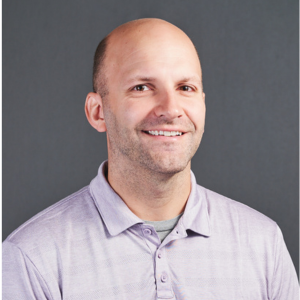Better Bathing for Residents With Alzheimer’s
| BY JANET STRASSMAN PERLMUTTER, MSW, LICSW, AND LOIS CAMBERG, PHD Better bathing for residents with Alzheimer’s Can caregivers help residents with Alzheimer’s cope with bathing? A Massachusetts pilot project investigates |
| Most experienced nursing staff members would have no trouble guessing a CNA’s least favorite job on an Alzheimer’s unit-bathing. The Commonwealth of Massachusetts recently funded a pilot project to improve working conditions for frontline staff in nursing homes and enhance quality of care for residents with Alzheimer’s Disease and Related Disorders (ADRD). Bathing was chosen as the area most in need of attention. When asked what they disliked about bathing residents with ADRD, CNAs cited examples of aggressive resistance that caused them emotional distress and concern for their physical safety. Some of the behaviors reported included kicking, scratching, grabbing, screaming and cursing at CNAs, pulling on shower hoses, and pounding the bathwater, soaking the CNA and the tub room. One CNA reported, “A soiled patient was fighting and I got scratched and had to go to the hospital for a tetanus shot.” In fact, bathing can be a time of increased risk of injury to residents and caretakers caused, in part, by physical struggles. Such resident behavior comes as little surprise when one considers the bathing experience from the perspective of a resident with ADRD. Residents who are disoriented are predictably irritated or agitated by splashing water, the multiple transfers from bed to bath, being naked in front of others, time-pressured CNAs, or simply a dislike of showers or baths. Standard care in participating nursing homes in this pilot project entailed washing each resident on a prearranged weekly schedule in moderate- to large-sized sterile, windowless rooms often described by residents and CNAs as cold, referring to both temperature and the stark atmosphere. In some settings the tub or shower room was oppressively hot with no apparent air-circulation system. In others the tub room doubled as a warehouse for spare wheelchairs and equipment. Residents were assisted and belted into either a stiff shower chair or a tub chair and, in the case of a bath, elevated several feet in the air, swung over the deep bathtub, and mechanically lowered into the tub. Was there a safer, more pleasant, and healthy alternative? The Project Each CNA chose one resident with a history of bath refusal and aggressive behaviors with whom to try an individualized bathing approach. CNAs and staff developers agreed to attend training sessions and project meetings and to document their experiences on checklist forms. CNAs were interviewed immediately after bathing trials. Strategies for Optimal Bathing Experiences Towel bathing. Project CNAs learned a towel-bathing technique in which a resident is cleansed thoroughly using warm, damp, soapy towels while remaining in bed. The resident stays under the warmth, comfort, and privacy of blankets, in the relative familiarity of his or her room, and is washed without the distracting and, for some, painful spray of a shower. CNAs reported some initial awkwardness with the new approach, including pressure to complete the bath before the wet towels cooled. Once towel bathing is learned, however, it can be done by a CNA working alone in less than 15 minutes, often in less time than it takes to give a tub bath. Even in early experiences with this technique, staff reported positive outcomes. “It helps calm agitated people,” reported one CNA. “It saves time. No time is lost transferring patients into shower or tub,” added another. And staff remarked that the towel bath is good for observing skin condition. Benefits of this new approach quickly traveled beyond the scope of the study. One CNA reported that towel bathing was a wonderful alternative to working with non-ADRD residents who didn’t like bathing. “And it would be good for want-to-stay-in-bed types,” added another CNA, emphasizing that towel bathing could be a matter of preference rather than need. CNAs also liked towel bathing for working with residents with late-stage disease and those who were difficult to transfer because of hip fractures, paralysis, or recent surgery. They also thought it would be useful with residents “on precautions” for contagious conditions, such as skin infections, because they could be bathed without leaving their own rooms. Massage. In the second training session CNAs were taught massage techniques for the frail elderly that could be integrated into the bathing process. This was the most widely used variation reported by CNAs in the bathing project and one most enthusiastically received by residents. As a result, CNAs promptly began offering massage to other residents experiencing agitation, pain, or other discomforts, whether physical or emotional. Individualization. Determining the residents’ bathing preferences was not addressed regularly in the preproject bathing routines. But how do you begin customizing care for a disoriented resident? One CNA summed up her learning and advice to others: |
|
| “Know the residents and do what they want,” was her overall recommendation, a guideline promoted by the project’s design. As CNAs bathed the same residents week after week, both reaped the benefits of a more familiar and more trusting relationship, according to CNA reports. With repeated experience, each CNA became familiar with the keys to compliance for her project resident, and tailored bathing accordingly. Sometimes this had nothing at all to do with shower versus tub versus towel bath, but hinged on the promise of a milkshake later or a reminder that family would be visiting that day. This interaction was a result of knowing her resident and using that knowledge to decrease resistance to bathing. Verbal and Nonverbal Communication |
|
| One CNA interviewed family members to learn about her resident’s background. She learned not only the woman’s pre-illness bathing preferences but also about the aspects of her life that made her most proud. The resident was for many years an accomplished nurse. The CNA now engages the formerly combative resident during bath time by discussing their common experiences in the nursing field. They talk about the many places where the elderly resident once worked, the resident glowing with pride while the CNA is completing a thorough bath. Because the CNA was able to distract the resident with conversation, no further adjustments to her bathing routine were needed. Facilitating Institution-Wide Changes Moreover, each site committed to writing policies and procedures that establish towel bathing as an accepted bathing practice at the facility, on par with tub baths and showers. Relevant policies were written for all sites by the conclusion of the six-month pilot project. While administrative/managerial support is necessary for many changes, some meaningful outcomes were effected with interventions as small as improved communication with little to no draw on institutional resources. One CNA involved in the project predicted at its conclusion that an outcome of this project will be more baths. When staff realize they can calm an agitated resident in just ten minutes with a towel bath or other soothing tub bath, she expects bathing will take place more often. Challenges Staffing shortages increase the pressures on CNAs to do tasks quickly. Learning a new strategy is often considered too time consuming. There is comfort in familiarity. This situation is often reinforced by supervisory staff who are reluctant to “rock the boat” with new and untried approaches. Both supervisory staff and CNAs may need help in thinking beyond the task of bathing to see that if residents are upset by the standard shower method, they often remain upset for hours, disturbing others and taking more staff time overall. Scheduling. Residents’ baths usually follow a fairly rigid weekly schedule, determined by nursing staff. Many CNAs reported that if the requested CNA was not working on the resident’s scheduled bath day, the resident would be bathed by a less familiar CNA, even if the bathing experience would be more combative or otherwise less successful. Typically, CNAs change bathing assignments weekly or monthly. More consistent assignments would, in many cases, facilitate more successful bathing experiences, as indicated by this project. Supporting changes. Working as a team, administrators, supervisors, and CNAs can develop procedures to improve the bathing experiences of residents, making them more pleasant and efficient. Staff meetings conducted for this project served as support groups for CNAs to discuss experiences and share ideas. These meetings appeared to be a meaningful component to the project and are recommended for transitions in practice. Conclusions |
| Janet Strassman Perlmutter, MSW, LICSW, studies and writes about life-enhancing innovations. She can be reached by e-mail at jsp18@mindspring.com. Lois Camberg, PhD, focuses on long-term care as a Program Evaluation Specialist and can be contacted at loisc@rcn.com. To comment on this article, send e-mail to perlmutter0404@nursinghomesmagazine.com. For reprints in quantities of 100 or more, call (866) 377-6454. Acknowledgment |
| This article is dedicated to the memory of Susan Eaton, PhD. |
Reference
Suggested Reading Rader J, Barrick A. Ways that work: Redefining the way we meet the needs of persons with dementia during bathing. Alzheimer’s Care Quarterly 2000;1(4):35-49. Sloane PD, Rader J, Barrick AL, et al. Bathing persons with dementia. Gerontologist 1995;35:672-8. |
I Advance Senior Care is the industry-leading source for practical, in-depth, business-building, and resident care information for owners, executives, administrators, and directors of nursing at assisted living communities, skilled nursing facilities, post-acute facilities, and continuing care retirement communities. The I Advance Senior Care editorial team and industry experts provide market analysis, strategic direction, policy commentary, clinical best-practices, business management, and technology breakthroughs.
I Advance Senior Care is part of the Institute for the Advancement of Senior Care and published by Plain-English Health Care.
Related Articles
Topics: Alzheimer's/Dementia , Articles , Operations











